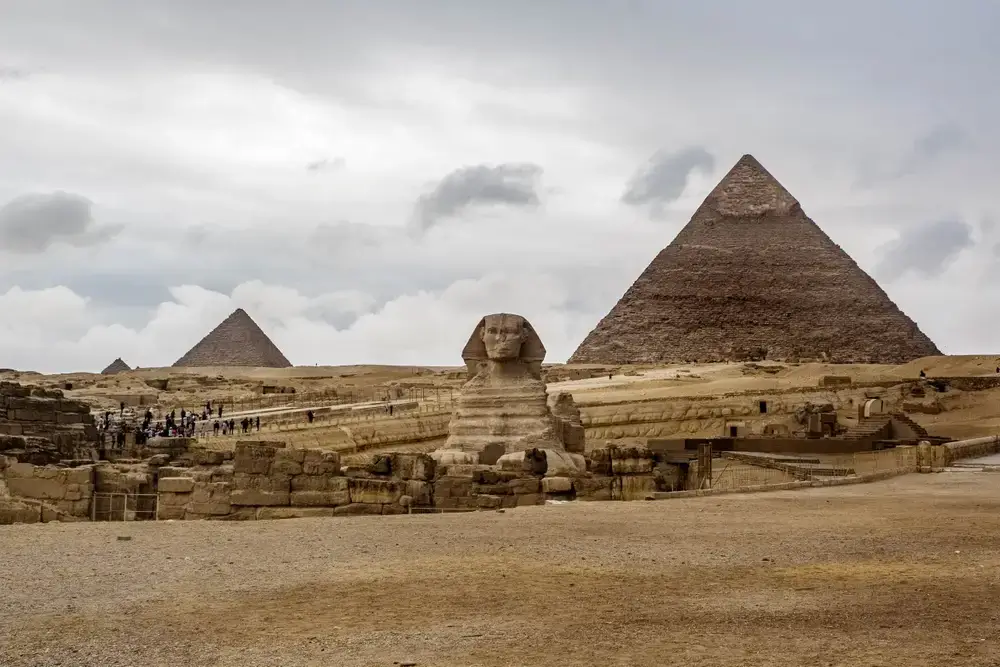Djedefre was the pharaoh who ruled over Egypt around 2556 BC, and during his reign, almost five millennia ago, he built the tallest and most incredible pyramid, even greater than the ones which were constructed on the shores of the River Nile.
An international team of archaeologists has discovered that the ruins that can be seen today in Abu Rawash, a few kilometres from Cairo, correspond to the so-called lost pyramid, whose megalithic stones have uncovered many of the legends that have surrounded the reign of Cheops.
Djedefre was the son and immediate throne successor of Khufu, the builder of the Great Pyramid of Giza; his mother remains a mystery for archaeologists and historians.
This is the lost forth Pyramid and it was one of the wonders of ancient Egypt, its magnificence made the three pyramids of the Giza plateau look like toys. This “lost” pyramid was the highest of all the Giza complex [Khufu, Khafre and Menkaure] and its stone was of much better quality as well. For years it was thought that these remains were just those of an unfinished construction. According to Zahi Hawass: “we found that it was not the case as its stones were used for numerous constructions in Cairo.
“During the past 12 years we have dug at the site, we have brought to light much of the history of the Fourth Dynasty of ancient Egypt, showing struggles for power and unravelling the mystery of the construction of the pyramids,” he added.
Scientists: Geological Evidence Shows The Great Sphinx Is 800,000 Years Old
The remains of the pyramid of Djedefre today rise barely over 10 meters above the ground. The remains of this, once great Pyramid are located on a hill-top in Abu Rawash, a militarized and restricted area, located around the parched desert, which in the background displays an impressive black cloud of the polluted air of Cairo. A view that was very different thousands of years ago when Djedefre’s pyramid stood tall against the desert. You can easily make out the three majestic pyramids of the Giza plateau from where the “greater” pyramid of Djedefre once stood. Archaeologists believe that even though this ancient Pyramid was relatively close to the other three pyramids, they never shared a connection.
Hawass believes the son of Cheops chose this place, at some distance from Giza, because he wanted an independent resting place which he marked by the placement of his majestic pyramid, but also because the site were the pyramid was enacted, would place his construction much closer to the sun and the sun God.
According to the latest research, archaeologists believe that Djedefre’s pyramid was at least 7.62 meters higher than that of Cheops, which has 146 meters and each of the faces of the pyramid, at its base, measured 122 meters while having a tilt angle of 64 degrees. The pyramid was built with limestone and red granite that originated from Aswan, 800 miles away on the Nile. Using a hard dolerite stone, the blocks of stone were precisely shaped using a saw made out of copper and quartz. Each of the pieces used for the construction of the majestic pyramid could weigh up to 25 tons and archaeologists believe that up to 370 people were needed to move it.
Archaeologists estimate that most of the 15,000 people who arrived to the construction site in the eight years of the construction were farmers who worked on the construction process when the Nile River was flooded, preventing them to work on their crops.
An opening on the surface, marks what was the passage down to the underground chamber, now exposed to the outdoors, it helped verify that mortar was used in the first phase of construction to consolidate the inside of the chamber where the Pharaoh would rest in his journey to the afterlife. The outside floor is littered with fragments of small vessels which are believed to have been used to bring offerings to Djedefre.
* * *
NEXT UP!
700,000-Year-Old Skull Found In Greece Completely Shatters ‘Out of Africa Theory’
In 1959, a human skull, that has been dated back 700,000 years and is now known as the “Petralona Man” or the “Archanthropus of Petralona,” was unearthed. Since that time, researchers have been pondering the question of where exactly this skull came from, which has sparked a significant amount of discussion.
The skull, which was found lodged in the wall of a cave in Petralona, located close to Chalkidiki in Northern Greece, is considered to be the oldest human “Europeoid” (showing European traits). A shepherd accidentally discovered the cave, which was filled with stalactites and stalagmites. In the following years, researchers also unearthed a vast quantity of fossils, which included pre-human species, animal hair, petrified wood, stone and bone tools, and other artefacts.
The President of the Petralona Community gave the skull to the University of Thessaloniki in Greece. The agreement stated that once the investigation was completed, a museum displaying the findings from the Petralona cave would be opened, and the skull would be returned to be displayed in the museum. However, this promise was never fulfilled.
* * *
READ MORE: Graham Hancock: Ancient Civilization Wiped Out By Massive Comet 22,000 Years Ago
Read more on Ancient Origins: These 4 Ancient Civilizations Existed On Earth Long Before Human Race
Enjoyed it? Please take a moment to show your support for Collective Spark.
We’d love to hear from you! If you have a comment about this article or if you have a tip for a future Collective Spark Story please let us know below in the comment section.

